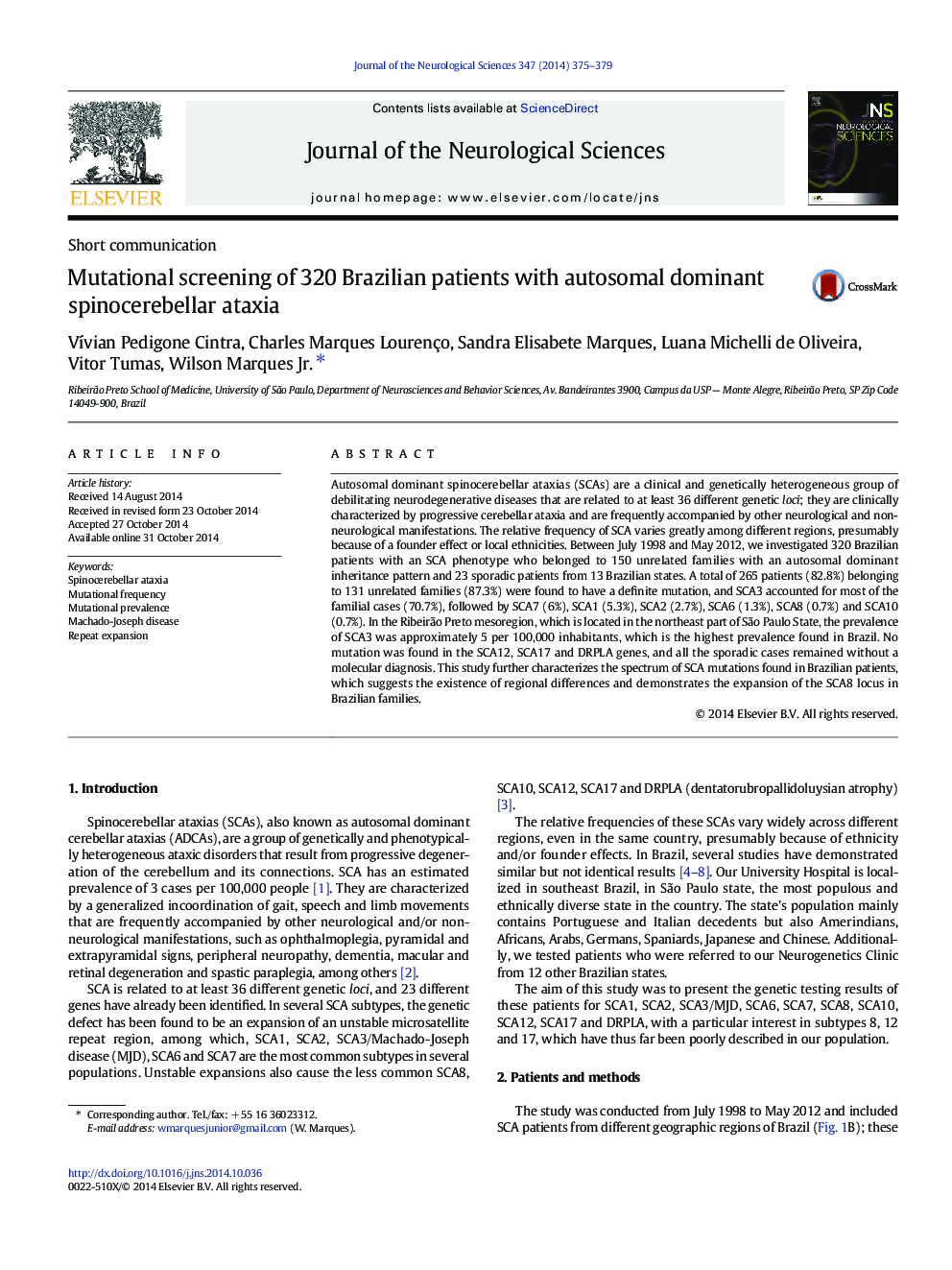| Article ID | Journal | Published Year | Pages | File Type |
|---|---|---|---|---|
| 8276943 | Journal of the Neurological Sciences | 2014 | 5 Pages |
Abstract
Autosomal dominant spinocerebellar ataxias (SCAs) are a clinical and genetically heterogeneous group of debilitating neurodegenerative diseases that are related to at least 36 different genetic loci; they are clinically characterized by progressive cerebellar ataxia and are frequently accompanied by other neurological and non-neurological manifestations. The relative frequency of SCA varies greatly among different regions, presumably because of a founder effect or local ethnicities. Between July 1998 and May 2012, we investigated 320 Brazilian patients with an SCA phenotype who belonged to 150 unrelated families with an autosomal dominant inheritance pattern and 23 sporadic patients from 13 Brazilian states. A total of 265 patients (82.8%) belonging to 131 unrelated families (87.3%) were found to have a definite mutation, and SCA3 accounted for most of the familial cases (70.7%), followed by SCA7 (6%), SCA1 (5.3%), SCA2 (2.7%), SCA6 (1.3%), SCA8 (0.7%) and SCA10 (0.7%). In the Ribeirão Preto mesoregion, which is located in the northeast part of São Paulo State, the prevalence of SCA3 was approximately 5 per 100,000 inhabitants, which is the highest prevalence found in Brazil. No mutation was found in the SCA12, SCA17 and DRPLA genes, and all the sporadic cases remained without a molecular diagnosis. This study further characterizes the spectrum of SCA mutations found in Brazilian patients, which suggests the existence of regional differences and demonstrates the expansion of the SCA8 locus in Brazilian families.
Related Topics
Life Sciences
Biochemistry, Genetics and Molecular Biology
Ageing
Authors
VÃvian Pedigone Cintra, Charles Marques Lourenço, Sandra Elisabete Marques, Luana Michelli de Oliveira, Vitor Tumas, Wilson Jr.,
